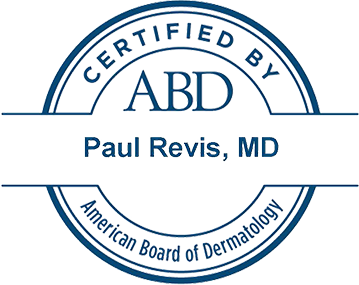Moles
Moles are the pigmented or brown lesions on the skin that are common in most individuals. The number and type of moles that an individual has are often determined by inheritable factors. It is common for the moles in a child to often mimic those of one parent. In general, fair skin individuals often have more moles on their body than darkly pigmented or brown-eyed individuals. It is not necessary to remove benign appearing moles unless they become irritated or bothersome.
Moles are important because the number and type of moles that an individual has can tell us about the individual’s risk for developing malignant melanoma. In addition, moles themselves can sometimes turn to melanoma. It is important for everyone to monitor moles for changes in size, color, and shape. Significant change may indicate that a mole has developed melanoma cancer and is therefore malignant.
Research has now shown, without a doubt, that exposure to tanning beds and sunburns are significant risk factors that can cause benign moles to change into cancerous or malignant lesions. In general, if a mole appears different than most of the moles on your body or if a mole is changing in color, size, or shape faster than other moles on your body, the lesion should be checked by a physician, who may recommend a biopsy be taken.




